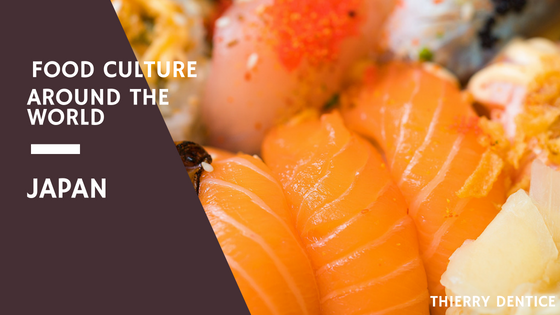Japanese food culture is thriving, and not just in Japan. Their signature dishes, such as sushi, are celebrated and respected throughout most of the world. Throughout Japan, restaurants carry local dishes and specialties specific to that area. The local cuisine contains more than 1,500 different items, with rice at the center of the majority. Careful preparation and presentation are crucial to Japanese food culture. In Japan, food is more than just food; it’s an art form.
Rice
Rice is a staple in Japanese culture and was even used as currency at one point. It’s served as a base or a side for most meals and is rarely wasted and always utilized. The most popular, and well-known, rice dish is of course sushi, where rice is combined with a variety of other ingredients and served in a roll. Other favorite rice dishes include donburi, which is simmered meat, fish or vegetables served over rice; okayu, a rice porridge; and onigiri, which is small rice balls often wrapped in nori.
Fish
Fish is also an essential component of Japanese food culture. Japanese people consume much more fish than their Western counterparts, which is believed to be the reason for the low rate of heart disease throughout the country. Fish is served in a variety of styles, including odorigui, nama, sashimi, yaki and tempura. The Tsukiji Fish Market is the world’s largest wholesale fish and seafood market and is the best place to get an early-morning breakfast or some of the freshest sushi in the world.
Noodles
Several types of noodles are also popular in Japan. Udon noodles are made from wheat flour and are boiled and served in broth, usually hot but sometimes cold during the summer months. Soba are buckwheat noodles, often served cold with a dipping sauce, green onions and wasabi. Ramen is another type of popular noodle dish. Though originating from China, it’s a dish also served in Japan. Ramen are thin egg noodles typically served in a hot broth. The broth is usually flavored with shoyu or miso and topped with a variety of ingredients.
Rituals and Habits
Besides the actual food, Japanese food culture also revolves around eating rituals and habits. There are many unique pieces of tableware and utensils, like chopsticks, and manners are incredibly important. Typically, the Japanese dine at low tables and sit on a cushion on the floor. In formal situations, the meal is eaten while kneeling on the ground, while in more casual settings, diners sit cross-legged.
Knowing the culture of a country is crucial when planning a trip. If you’re unaware of the rituals regarding food, you may unwittingly offend the natives. Stay tuned for the next installment in this new blog series, where I’ll continue exploring food culture around the world.
